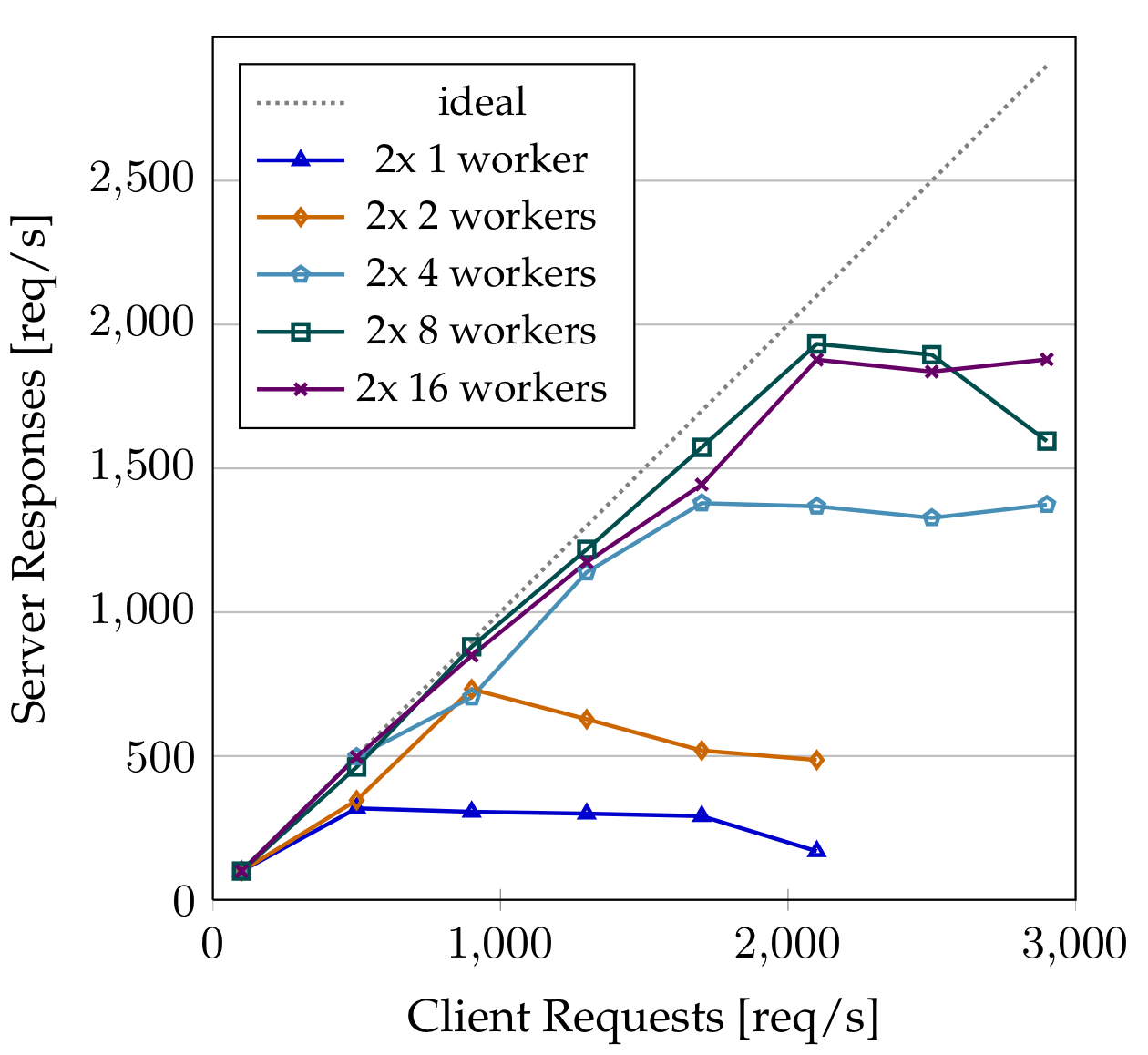Liquid Quality Attributes
Scalability
Adaptability
Flexibility
Elasticity
WWW 2011
Predictable Performance under any workload
Cope with changes in the environment at run-time
Transparent Deployment on any execution platform
Absorb dynamic workload changes
Some Constraints
Fine-grained Decomposition
Global Addressability
Underspecified Communication
Uniform Interface
WICSA 2011
Smaller elements are easier to migrate, replicate and bind
Uniquely identify all elements (and their state)
Elements closer together should interact more efficiently
Predict the impact of each interaction on the state of an element
The S Scripting Language
for Scalable, Stateful, Services
PPOPP 2012
Hello World
service S {
res '/hello' on GET {
//handle GET request
respond 'World!';
}
}Request handlers contain any JavaScript code
(with some S extensions)
Service Composition
service Composition {
res '/hello1' on GET {
respond get 'http://api.inf.usi.ch/';
}
res '/hello2' on GET {
respond get '/hello1';
}
}Stateful Services
service Stateful {
res '/helloState' {
state s = 'World'
on GET {
respond 'Hello' + s
}
on PUT {
s = req.name
}
}
}S Runtime
- Compiled to JavaScript, S scripts run on the node.js framework
- The S runtime extends node.js with support for parallelization and automatic reconfiguration
- Each request handler runs in a separate node.js worker process
(Global Addressability, Fine-grained Decomposition) - Handlers of stateless resources can be replicated and migrated dynamically at will (Uniform Interface)
- Handlers of stateful resources use a master-slave replication style (Uniform Interface)
- Communication between node.js processes uses an optimized protocol, while HTTP is used to interact with the external world (Underspecified Communication)
Conclusion
- The "Liquid" physical properties is a good metaphor for intrinsically adaptable software, which can be seamlessly deployed across heterogeneous execution platforms (Clouds, multicores).
- The S language extends JavaScript with architectural-level constructs to build RESTful Web services, which also embody the constraints of the liquid architectural style
References
- D. Bonetta, D. Ansaloni, A. Peternier, C. Pautasso, W. Binder, Node.Scala: Implicit Parallel Programming for High-Performance Web Services, Europar 2012
- D. Bonetta, A. Peternier, C. Pautasso, W. Binder, S: a Scripting Language for High-Performance RESTful Web Services, PPoPP 2012
- D. Bonetta, C. Pautasso, An Architectural Style for Liquid Web Services, WICSA 2011
- D. Bonetta, C. Pautasso, Towards Liquid Service Oriented Architectures, WWW 2011 PhD Symposium
Use a spacebar or arrow keys to navigate
